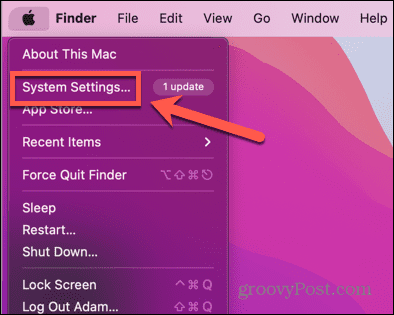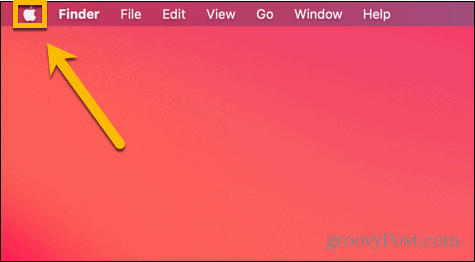How to Use Emojis on Mac

Adding emojis to your text can help you convey meaning or save you from typing. Here’s how to bring up and use emojis on Mac.
You finally pluck up the courage to ask your crush out, but you’re too scared to do it face-to-face. Instead, you send them a message. You wait anxiously for the reply, until finally it comes, but unfortunately, it’s the laughing face emoji.
Sure, you’re devastated, but also there’s a part of you that can’t help but marvel at how a single emoji can convey so much emotion. If you want to add emojis to your text, whether it’s to break someone’s heart, or just to add your national flag to your social media username, there’s a quick and easy way to do so if you’re using your Mac.
If you want to be able to add emojis to your text as easily as you do on your phone, then here’s how to use emojis on a Mac.
What Are Emojis?
Emojis are pictograms that can be embedded into text. Some of the most popular emojis are representations of facial expressions that developed out of text emoticons such as :) and ;). You can use these facial expression emojis to convey emotion in your text, such as adding a laughing or crying emoji.
However, emojis extend way beyond smileys. There are a large number of emojis that are visual representations of everything from animals and vehicles to food items and flags. Some emojis have taken on meanings unrelated to their original intent (eggplant emoji, we’re looking at you here). The majority of emojis are used to either add additional meaning to text or to liven it up a little, however.
How to Bring Up Emojis on Mac Using a Keyboard Shortcut
If you want to add emojis to your text, it’s easy to do on a Mac. You can quickly bring up the emoji picker using a keyboard shortcut. The emoji picker has been available since OS X 10.9 (Mavericks). Even if your device is a little older, this keyboard shortcut should still work for you.
To use a keyboard shortcut to open the emoji picker on Mac:
- Click in any area that accepts text input, such as the message field of the Messages app, or even in the search bar of a browser window.
- Press the key combination of Ctrl+Cmd+Space.
- The Character Viewer window will open, with a wide range of emojis.


- You can select emojis by type, such as Smileys & People or Food & Drink.
- If you would prefer a view that’s similar to on your iPhone, click the Emoji & Symbols icon in the top right corner of the window.


- You can now scroll through the entire list of emojis.


- To add an emoji to your text, simply click on it in the emoji picker.
- The emoji is added to your text.


- When you’re done, you can close the emoji picker window, or leave it open to add more emojis to your text whenever you wish.
How to Bring Up Emojis on Mac Using the Globe Key
If your Mac has a Globe key (if it does, you’ll find it at the far left of the bottom row of keys on your keyboard) you can use this key to quickly open the emoji picker, too. The key may be set to change the input source if you have multiple keyboards set up, but you can change this in the settings so that it will always open the emoji picker.
If your keyboard doesn’t have this key, you won’t be able to use this method.
To bring up emojis on Mac using the Globe key:
- Press the Globe key on your Mac (at the far left of the bottom row of keys).
- The emoji picker should open.
- If it doesn’t, click the Apple icon in the menu bar.


- Select System Settings.


- Click Keyboard in the left-hand menu.


- Click the drop-down next to Press Globe Key To.


- Select Show Emoji & Symbols.


- The emoji picker should now launch every time you press the Globe key.
How to Add the Emojis and Symbols Viewer to the Menu Bar
You can also add a shortcut to the Input menu in the menu bar. This allows you to quickly open the Emoji & Symbols viewer by clicking on the relevant icon in the menu bar. The method for doing so will depend on which version of macOS you’re running.
On macOS Ventura or Earlier
To add the Input menu to the menu bar on macOS Ventura or later:
- Click the Apple logo in the menu bar.


- Select System Settings.


- In the left-hand menu, click Keyboard.


- Under Text Input click Edit.


- Toggle the Show Input Menu in Menu Bar switch to the on position.


- To open the emoji picker, click the Input Menu icon in the toolbar.


- Select Show Emojis & Symbols.


- The emoji picker will now open.
On macOS Monterey or Later
To add the Input menu to the menu bar on macOS Monterey or earlier:
- Click the Apple icon in the menu bar.


- Select System Preferences.


- Click the Keyboard icon.


- Select the Input Sources tab.


- Check Show Input Menu in Menu Bar.


- To open the Emoji & Symbols viewer, click the Input Menu icon in the toolbar.


- Select Show Emoji & Symbols.


- The emoji picker will now appear.
Using Emojis on Your Mac
Learning how to bring up and use emojis on Mac allows you to emojis into any text that you’re creating on your Mac. You can add emojis to your Messages, to Word documents, or almost anywhere else where you can enter text. These emojis can add color to your messages. They can also provide a quick way to get an idea across without having to type out text.
The fact that you can bring up an emoji picker on your Mac is something that many people don’t realize, and there are plenty of other useful Mac tips and tricks that you may not be aware of.
You can learn how to turn off Quick Note on Mac if you’re tired of the Notes app popping open when you don’t mean it to. You can learn how to disable automatic brightness on Mac if you just want your screen to stay at the same brightness level. Or you can even learn how to use dictation on your Mac if your fingers are getting tired from all that typing.
Leave a Reply
Leave a Reply






